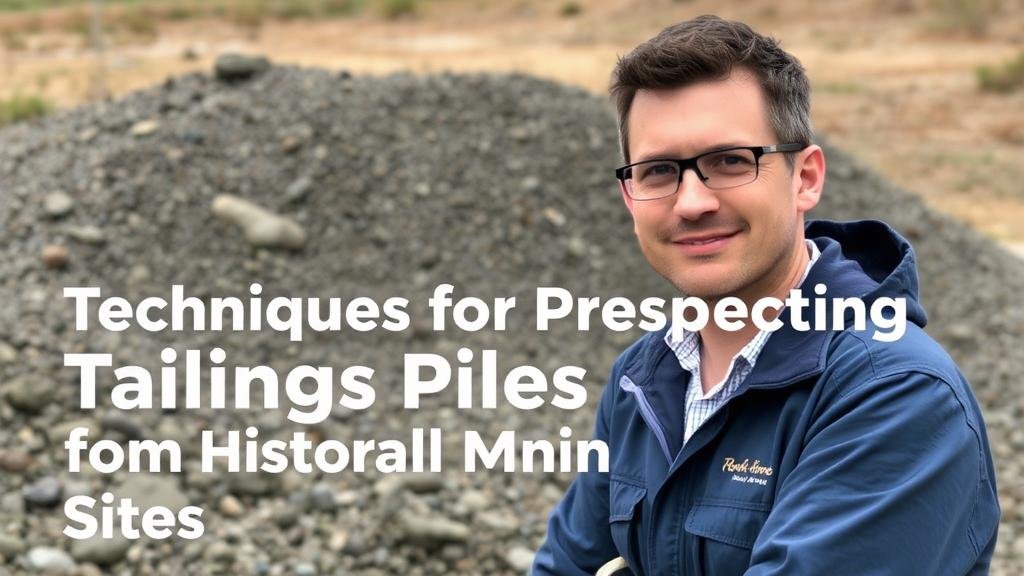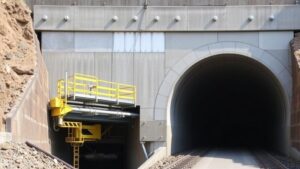Techniques for Prospecting Tailings Piles from Historical Mining Sites
Techniques for Prospecting Tailings Piles from Historical Mining Sites
Mining has been an integral part of human development, providing essential resources for various industries. But, historical mining activities often leave behind tailings piles–remnants of mined materials that can still hold valuable minerals. Prospecting these tailings piles is crucial, as it contributes to resource recovery and environmental remediation. This article explores effective techniques for prospecting tailings piles, addressing methods, technologies, and real-world applications.
Understanding Tailings Piles
Tailings piles consist of the waste materials generated after the extraction of valuable minerals. These piles vary in composition based on the mining method and the type of ore processed. Traditional mining techniques often resulted in substantial amounts of tailings, some of which may still contain significant concentrations of minerals or metal ores. As a result, prospecting these areas presents opportunities for both economic gain and responsible resource management.
Techniques for Prospecting
Various techniques can be employed to prospect tailings piles effectively. Each method comes with its advantages, making them suitable for different environmental and economic contexts. The primary techniques include geological mapping, sampling, geophysical surveys, and analytical testing.
Geological Mapping
Geological mapping involves assessing the topography and lithology of tailings piles to ascertain potential mineral content. This technique allows geologists to identify areas with higher concentrations of valuable minerals.
- Example: In a study conducted in the Western United States, geological mapping revealed that certain sections of historical tailings contained higher gold concentrations than initially recorded.
- Case Study: A geological mapping project in Montana uncovered deposits of silver within tailings, prompting further exploratory efforts.
Sampling
Sampling is a foundational technique in mineral exploration that involves collecting small portions of material for analysis. This practice enables prospectors to determine the average grade and composition of the tailings. There are several sampling methods, including:
- Random Sampling: Collecting samples from various parts of the tailings pile to obtain a representative grade.
- Composite Sampling: Combining materials from multiple locations within the tailings to create a more comprehensive dataset.
To ensure accuracy, specific protocols must be followed when collecting samples, including maintaining consistent sizes and locations to avoid bias. For example, a successful sampling campaign in Nevada resulted in the identification of unprocessed silver, leading to the resumption of mining operations.
Geophysical Surveys
Geophysical surveys employ various technologies such as ground-penetrating radar (GPR) and electromagnetic methods to investigate the subsurface properties of tailings piles. These non-invasive techniques provide valuable data about the materials density and composition without disrupting the existing topography.
- Ground Penetrating Radar: This method utilizes radar pulses to image the underground structure, helping identify the thickness of tailings and underlying materials.
- Electromagnetic Surveys: These surveys measure the conductivity of the tailings material, which can indicate the presence of metallic elements.
For example, a project in South America used GPR to locate high-grade copper within tailings, facilitating targeted extraction efforts.
Analytical Testing
Once samples are collected, analytical testing is essential to confirm mineral content. Standard methods include fire assays for precious metals and atomic absorption spectroscopy for base metals. e tests provide precise quantitative data critical for assessing the economic viability of processing the tailings.
A notable example is the comprehensive analytical testing of tailings from a defunct mining site in Canada, which revealed the presence of rare earth elements, creating new prospects for resource recovery.
Environmental Considerations
While prospecting tailings piles can yield significant economic benefits, it is essential to consider the environmental impacts. Proper care must be taken to minimize disturbances and prevent the proliferation of toxic runoff. Regulatory compliance, environmental monitoring, and community engagement play vital roles in ensuring sustainable practices.
Conclusion and Actionable Takeaways
Prospecting tailings piles from historical mining sites can unlock a wealth of mineral resources, presenting opportunities for economic growth and sustainable resource recovery. By employing techniques such as geological mapping, sampling, geophysical surveys, and analytical testing, prospectors can effectively evaluate these remnants of mining activities.
As the mining industry continues to evolve, leveraging advanced technologies and maintaining a commitment to environmental stewardship will be crucial. Stakeholders are encouraged to:
- Invest in modern geophysical tools to enhance prospecting efficiency.
- Adopt rigorous sampling protocols to ensure data reliability.
- Engage with local communities to ensure transparent and responsible mining practices.
By integrating these techniques and approaches, the potential for reclaiming valuable resources from tailings piles can be realized while also fostering sustainable mining practices.


